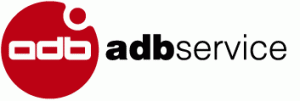A reading below 50 indicates an economic contraction, with readings closer to 0 indicating a higher degree of contraction. PMI costs typically range from 0.3% to 1.5% of the original loan amount annually, which increases your monthly mortgage payment. For many homeowners, Private Mortgage Insurance (PMI) is an unavoidable expense when buying a home with a lower down payment, but it doesn’t have to last forever. Eliminating PMI can save you thousands of dollars annually, reduce your monthly mortgage payments, and give you greater financial flexibility.
- The data should be compared to all other economic data sources when used in decision-making.
- Falling production alongside weak new orders signals declining economic momentum.
- Survey respondents are asked to report whether they see an improvement, deterioration, or no change in each of the categories.
- A PMI provides insight into the business environment and helps companies see where the economy is headed.
- By distilling sentiment from peers nationwide, the PMI arms corporate strategists with real-time perspective on demand trajectories to proactively position companies for challenges and opportunities ahead.
- Manufacturers are expressing the highest level of positive sentiment towards growth prospects in nearly 9.5 years triggered by innovation and expectations of economic and demand conditions will remain favorable.
Conversely, a reading below 50 signifies contraction – business conditions are deteriorating. A reading of 50 or above means the sector is expanding – business conditions are improving. This specific index is calculated using data collected from purchasing managers in businesses within a specific sector. In this process, purchasing managers are asked questions regarding five main categories of business activities.
We and our partners process data to provide:
The PMI is calculated through a survey of purchasing managers who respond to questions about key areas of their business, such as new orders, production levels, employment, supplier deliveries, and inventories. A reading above 50 typically indicates expansion, while a reading below 50 suggests contraction. A Purchasing Managers’ Index (PMI) looks at economic trends in the manufacturing and service sectors to understand their health. Business executives in each of these sectors are surveyed monthly about key areas such as employment, output, prices charged, and the level of new orders.
INSIGHTS
As the output for the changes can be positive, negative, or no change at all, each input from participants had some weightage, specifically considered in the stock market. The standard weightage for positive results is 1, while the same for no change is 0.5. These constitute three different diffusion indexes prepared using the inputs of the participants from different sectors participating in the survey.
Apple’s iPhone Production in Focus: Is the Tariff Pause Enough to Ease the Pressure?
The PMI relies on survey responses from purchasing managers, and their interpretations of business conditions might be subjective. Responses can be influenced by individual perceptions, bias, or even temporary fluctuations in business conditions. In addition, the wording of survey questions can influence the responses, especially if it is not interpreted the same by each surveyor. The PMI is based on responses from members of the ISM Business Survey Panel, which includes a range of industries diversified by the North American Industry Classification System (NAICS) and based on each industry’s contribution to U.S. The survey covers 18 industries that include every aspect of the manufacturing sector.
PMI readings can be volatile from month to month due to various factors such as seasonal variations, supply chain disruptions, or changes in market sentiment. PMI data can also be subject to revisions as more accurate information becomes available. This means that initial readings might be adjusted, potentially altering the interpretation of the data. The ISM Manufacturing “Report on Business” and the PMI number is closely watched by investors, business and financial professionals. The employment also has risen to one of the greatest extents since the data collection began in March 2005.
It is further used by stakeholders, who base their decisions on the figures/values obtained. The Purchasing Managers’ Index (PMI) is a less well-known but unique measure of double top neckline economic health. While other measures, like employment data, provide a view of the economy based on the past, the PMI delivers a future-looking perspective on economic trends. The PMI is a valuable tool for policymakers, regulators, executives, and investors to make more informed decisions because it is forward-looking and uniquely formulated.
Scores ranging from zero to 100 partition the spectrum of expansion versus contraction. Readings above signal prevailing conditions strengthening compared to the last period. If you’re financially ready, consider refinancing to a shorter loan term (e.g., from 30 years to 15 years). While this increases your monthly payment, it helps you pay off your balance—and reach the 20% equity mark—much faster. The sub-index for production edged higher to 52.6 for March while that of new orders climbed to 51.8, pointing to improvement in manufacturing supply and demand. The data presented herein is obtained from a survey of manufacturing supply executives based on information they have collected within their respective organizations.
Consumer Products & Retail
The data is then weighted depending on the category’s contribution to the gross domestic product (GDP). For example, new orders are an especially important indicator of economic activity and represent 30% of the PMI score while responses about inventories account for 10% of the PMI. Purchasing managers’ indexes (PMI) are economic indicators derived from monthly surveys of private sector companies. The PMI is an important leading indicator that provides valuable insights into the state of the U.S. economy in general and the manufacturing sector in particular. While it tends to be occasionally overlooked, new investors should familiarize themselves with this key economic indicator.
The purchasing managers’ index, commonly referred to as PMI, is a monthly survey that provides insight into the health of the manufacturing sector. PMI are surveyed about key business metrics like production levels, new orders, employment, supplier delivery times, and inventories. Their responses are used to construct a diffusion index that summarizes economic conditions in the broader industrial economy. As professionals positioned early in the supply chain, purchasing managers feel changes in demand and activity before they are reflected in official output data. The Purchasing Managers’ Index (PMI) is a crucial economic indicator that assesses the overall health of the manufacturing and services sectors. Derived from monthly surveys conducted among purchasing managers, the PMI provides valuable insights into various business conditions, including employment trends, production levels and new order volumes.
- This means that initial readings might be adjusted, potentially altering the interpretation of the data.
- All of the information on this website is for educational purposes only and is not to be construed as investment or trading advice.
- An index above 52.1 percent, over time, is generally consistent with an increase in the Federal Reserve Board’s Industrial Production figures.
- Respondents characterize fluctuations since the last period as elevated, steady or diminished while elucidating seasonal influences.
- A Services PMI gauges activity level in industries with a less tangible product, such as financial services, health care, and hospitality.
- Conversely, a decline in new orders indicates faltering demand, which leads to cutbacks in production.
For example, strong new orders coupled with falling inventories points to ramping production to meet rising demand. Conversely, weak new orders alongside rising inventories suggests overproduction relative to demand. Companies are able to cut back on output in response, signaling a potential economic contraction.
What is a Purchasing Managers’ Index?
Jibun Bank is a retail bank established in 2008 as a joint venture between Bank of Tokyo-Mitsubishi UFJ and KDDI Corporation. Jibun surveys over 400 companies each month to gather PMI data on output, new orders, new export orders, employment, etc. Jibun Bank issues the ‘Jibun Bank Japan Manufacturing PMI’ monthly report in cooperation with IHS Markit, which analyzes the survey results. The report has been published since April 2008, providing over a decade’s worth of insights into the Japanese manufacturing economy. Slower deliveries due to strong demand and tight supply often lead to rising prices as suppliers gain greater pricing power. Conversely, faster deliveries reflect weakening demand and signal disinflationary pressures.
An Employment Index above 50.3 percent, over time, is generally consistent with an increase in the Bureau of Labor Statistics (BLS) data on manufacturing employment. The PMI or Purchasing Managers’ Index compiles a survey of economic trends for a country in sectors such as manufacturing and services. The data is released monthly and is one of the first and most current data sets to be released. The composite PMI compiles the surveys to give an outlook of the whole economy.
Logistical supply line performance serves as the next data point, with expediency of input deliveries from providers signaling constraints or ease within global sourcing networks. Finally, employment levels both permanent and contingent round out the report card, conveying hiring and staffing modifications informing future productive potential. Each component contributes equally to the synthesizing diffusion index, canceling out biases to highlight overarching trajectories. PMI reports are often released on a monthly basis and can cause short-term market movements based on investor perception. A better-than-expected PMI can boost market coinberry review confidence, leading to higher stock prices, while a disappointing PMI reading might trigger market sell-offs. We will admit that PMIs aren’t watched much in Australia unless a figure is really good or really bad.
Input price rose on the cost side which is driven by higher raw material and freight costs. Manufacturers are expressing the highest level of positive sentiment towards growth prospects in nearly 9.5 years triggered by innovation and expectations of economic and demand conditions will remain favorable. Aggregating replies commences by quantifying reporting enhancements separately high exposure rock climbing from those unchanged or deteriorated. Weighting then attaches import reflecting sub sectors’ financial importance within GDP tallies. Summation derives diffusion indexes tracking divergence from stability signaling intensifying or slackening dynamics.









